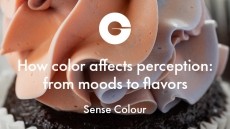Taste receptors understanding may hold key for low-cal sweeteners: Review
The new review, published in Flavour and Fragrance Journal, provides an overview on the current state of knowledge on the receptors which mediate all five taste modalities, offering a perspective the validity of these models, and emerging technologies.
The review, authored by Dr Grant DuBois, Director, Ingredient & Product Sciences at The Coca-Cola Company, suggests that many questions about the interactions between the chemical structure of tastants and their effects on taste have yet to be answered.
“[For example,] the major challenge in sweetener research has always been to identify zero-calorie sweeteners which accurately replicate the tastes of carbohydrate sweeteners such as sucrose. However, after more than a century of research, no zero-calorie sweetener has been found which achieves this objective,” said DuBois.
Tasty relationship
Dr DuBois noted that the relationship between chemical structure and taste has always been a subject of keen interest to chemists.
In recent years, the receptors which mediate sweet, bitter and umami (savoury) taste have been identified. However, the receptors mediating sour and salty tastes are still not known with certainty.
In an effort to rationalise such relationships, DuBois explained that chemists have built many models – particularly for sweeteners and the sweetener receptor.
“Early models were exclusively pharmacophore models but, later, receptor models and even computational models with predictive capability were developed,” he said.
The new review gives a perspective on current taste models and offers an insight into developing technologies – which have been enabled by the advanced understanding of sweet and bitter taste receptors.
Better understanding
“A great deal is now understood about the receptors which mediate sweet, umami and bitter tastes. In addition, information on the receptors which mediate sour and salty tastes is accumulating,” said DuBois.
He added that the sequencing of the human genome “has enabled great advances in our understanding of the receptors which initiate taste responses ...Yet, there remains much we do not understand.”
The review explained that that the receptors initiating sweet, umami and bitter tastes have all been expressed and studied in current systems in a way that allows current models to be “used in high-throughput screening (HTS) assays to identify novel synthetic and natural agonists as well as antagonists.”
These include positive allosteric modulators of the sweetener receptor, which have been shown to dramatically reduce the concentrations of carbohydrate sweeteners needed for stimulus, whilst at the same time “retaining the high quality taste of carbohydrate sweeteners.”
In addition, the review notes that bitterness inhibitors have been identified, “which may have value in the reduction of the negative taste attributes of some foods and beverages.”
DuBois added that an improved understanding of the bio-rationale for the slow sweetness onset and sweetness linger of high-potency sweeteners has led to an approach to improvement of their tastes.
A model answer?
“We have learned a great deal, particularly over the last decade, about the receptors which initiate our perceptions of the primary tastes of sweet, bitter, umami, sour and salty. However, there is still a significant number of questions that are unresolved at this time,” said DuBois.
He added that, “as we consider the models developed, it seems appropriate to consider a view on the value of models given by the statistician George Box: ‘All models are wrong … some are useful’”
Source: Flavour and Fragrance Journal
Published online ahead of print, doi: 10.1002/ffj.2042
“Validity of early indirect models of taste active sites and advances in new taste technologies enabled by improved models”
Author: G.E. DuBois














